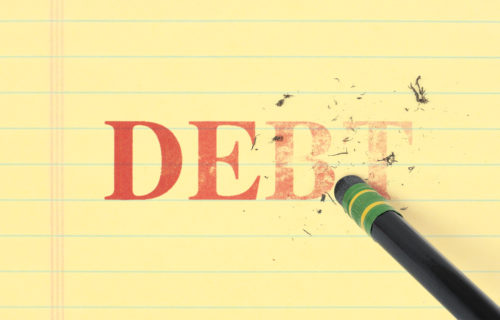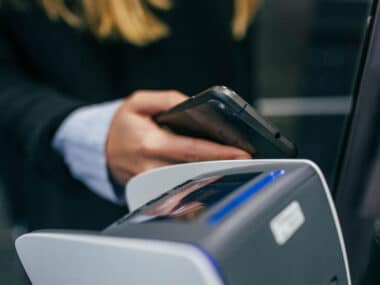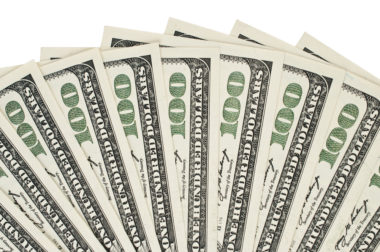The freedoms and potential associated with getting your first credit card can be exciting. When it comes to reaching financial goals and major life milestones, however, credit card debt is a big source of frustration. Making excessive purchases with your credit cards will leave a growing balance on them and cause a whole lot of stress.
If you have more credit card debt than you are comfortable with, you aren’t alone. In fact, a survey conducted in 2019 indicated that 29% of consumers regularly carry a credit card balance from month to month. Further, 5% of consumers carry between $5,000 to $10,000 in credit card debt. This debt brings interest charges and negative impacts on consumer credit scores, and the issue is only growing with time. As of late 2018, total consumer credit card debt hit $4 trillion for the first time in history — a worrying statistic.
The good news is even if you’re spending slightly beyond your means, you can turn it around. How can you pay off credit card debt and keep your balances down? This guide will discuss best practices for paying off credit card debt, determining whether your current credit cards are right for you, and reducing overspending.
Table of Contents
Pay Off Your Credit Cards
This may seem like a daunting task, but you can make a huge dent in your credit card debt with a few simple steps.
- Sort by interest: The card with the highest interest rate is costing you the most money and likely taking you the longest to pay off, so tackle it first. Then move down the line to the card with the next highest interest rate.
- Request a lower interest rate: You can negotiate rates with your credit card company. All it takes is a phone call to each credit card company and requesting that they lower your interest rate. If you’re in good standing with the company and have been offered lower rates from competitors, be sure to mention it to customer service. Lower interest rates mean lower monthly payments, and you’ll be that much closer to paying off the principal balance.
- Negotiate credit card debt: In addition to negotiating rates, you can discuss the existing debt. If the minimum amount you owe for your credit card payments is becoming too much to handle, contact your card provider. You may be able to work out a better payment plan and, in some instances, a credit card debt settlement. While this will impact your credit rating, it could be a smart move in the long run, depending on your circumstances.
- Balance transfer: If you have racked up debt on a high interest rate credit card, consider transferring the balance to a different credit card with a lower interest rate (some even go as low as 0% on a temporary basis). This can be a good way to cut debt and pay off the new balance faster. Plus, you save on high interest charges. Just watch out for balance transfer fees, as many cards will charge a fee when you make a balance transfer.
- Pay more than the monthly minimum: It could take decades just to pay off a single credit card if you only make the minimum payment. This minimum is designed to extract interest from you — not to help you keep your bills under control. Paying above the minimum (or better yet, the full outstanding balance) each month keeps you from losing money in interest to the credit card companies. You can use a credit card payoff calculator to find a payment amount that lets you address debt in a balanced manner.
- Limit credit card usage: Pay cash when you can. And if you can’t afford something, don’t buy it until you can. Have you ever noticed that when you carry cash you tend to be more conservative with spending it than you are with cards? With credit and debit cards, it’s easy to ignore the sum of what’s actually being spent.
Finding the Right Credit Card for You
Some credit card debt can be the product of simply having the wrong type of card, and different credit cards are suited for different types of consumers. The credit card you got after graduating high school — the one with the annual fee and the 25% interest rate — probably isn’t suitable for day-to-day use when you’re settling down and starting a family later in life.
It’s important to regularly assess your cards. Keeping abreast of current offers is a smart way to ensure you’re getting the best deal when it comes to credit card usage. It can also give you valuable leverage when negotiating better perks from your current credit card providers. Getting a new card with better terms is an effective method of decreasing debt in the long term, particularly if you intend on doing a balance transfer.
So which aspects of credit card offers should you be most concerned about? For the most part, they can be broken down into two categories: fees (including the interest rate) and perks.
Calculating Credit Card Interest Rates and Fees
Your credit card’s interest rate, calculated as an annual percentage rate (APR), is perhaps the single most important aspect to consider. APR is the interest rate for the card over the period of a year. Accordingly, paying off the card each month will usually result in no interest charge. However, if you intend on maintaining a balance, a good APR is essential.
A card’s APR can be set at a fixed rate or presented as a range in the terms and conditions. In cases of the latter, you may need to apply to gain an accurate understanding of the APR you can expect to pay. The average rate for a credit card is approximately 14% to 15%, though individuals with good to excellent credit often qualify for lower rates.
As you shop around for a better credit card, calculate how prospective APRs might impact your efforts to reduce debt. Imagine a scenario, for instance, in which you want to transfer $5,000 of credit card debt to a new card in order to pay it off in two years. Option A has a 25% APR with no annual fee, while option B has an 18% APR and an annual fee of $50:
- Eliminating this debt with option A will require a monthly payment of $266.86. You will accrue approximately $1,400 of interest in that time.
- Eliminating this debt with option B will require a monthly payment of $254.14. You will accrue approximately $1,000 of interest in that time and pay $100 in annual fees.
While that annual fee might feel like a bad deal, option B is the better choice in this scenario. You will comparatively save $12.72 per month, spending about $300 less overall, to eliminate the $5,000 debt. This is an example of the sort of comparisons you should make in your efforts to eliminate debt.
Which Credit Card Perks Matter to You?
A slightly worse APR might be justified with certain perks. The value of credit card rewards programs and perks is entirely dependent on whether you’ll actually leverage them, so it can be difficult to assign an objective monetary value to them. Regardless, some individuals get a lot of value out of them — so much so that they may sign up for a card practically exclusively for its perks.
Some common perks include:
- Cash rewards;
- Airline miles;
- Gas rewards;
- Temporary promotional interest rates — often 0% APR.
The last of these is an excellent perk for paying down debt. Many credit card providers offer limited-time promotions in which maintaining a month-to-month balance will not result in any interest charges. By transferring existing debt to a card with a temporary 0% APR promotion, you can pay down credit card debt without pouring money into a pit by paying interest.
Methods to Avoid Overspending
In addition to paying off existing credit card debt, there are methods you can employ to reduce the amount in charges you put on your credit cards to begin with. Check out the following strategies and try to see if any can help you curb unhealthy spending habits you may have:
Make a Budget
Do you know what you spend in a month and where you could trim spending? Making a detailed list or spreadsheet of where the money goes will help. Maybe you need to eat out less, get a less expensive car, use less air conditioning, stop going to the local coffee shop every day, or buy fewer new clothes. Any extra money can be used to pay off a high interest rate credit card at a faster rate.
Take a hard look at your finances. What are your priorities? What is at the bottom of the list? Decide if you want those things or if you want more financial stability. A strategic spending plan involves getting your expenses lower than your income.
Build an Emergency Fund
While paying your debt off before anything else makes sense because you’re cutting interest payments, it doesn’t help you prepare for unexpected expenses. Setting aside a certain amount in savings might give you some comfort and a buffer against the unpredictable. An amount as low as $500 can help protect you from financial surprises so you don’t add more debt when an unexpected expense hits.
It may seem impossible to save money, especially if you’re living paycheck to paycheck. But there are good reasons to save before or while paying off debt. An emergency fund could come in handy in case you need to make home or car repairs, for example.
At any point, there may be sudden, urgent costs in life. Not having at least a modest emergency savings can put you into a cycle of debt.
Experts recommend trying to save three to six months’ worth of expenses and putting it in a savings account. Compare savings accounts to find one that pays better, such as a money market account.
Freelance to Earn Extra Money
Either you have to alter the way you live, earn more money, or both.
Do you have a skill or talent that could make you extra cash every month? You could rent out space in your house through AirBnB, become a freelance writer, drive for Uber, sell valuables on eBay, sell your hair or your plasma, or even open an online store through a service like Etsy. Thanks to modern technology, it has never been easier to become a small business owner or earn some extra income through a side hustle.
Retirement might have to wait a few years while you get out of debt. Paying off bite-size chunks of debt will make your life less stressful. When you watch the debt dwindle, you’ll be more motivated to just get it done once and for all.
Most individuals carry consumer debt at some point in their lives, such as credit cards, student loans, and a mortgage. By finding ways to pay off debt, you’ll be happier in the long run.
Layaway
Layaway is a method of purchasing retail merchandise that allows shoppers to reserve an item and make payments on it until it is paid in full. Unlike most installment plans, you get the product after you make the final payment, rather than when you begin making payments. There is effectively no debt involved, so there is normally no interest or risk of repossession. It’s a great option if you want to take advantage of sales and avoid credit card usage.
Layaway is also something that has fallen off people’s radars over the years, especially during the freewheeling decades of the 1980s and ‘90s. However, 2011 saw a resurgence of layaway as a debt-free shopping tactic.
The point is, if you can’t afford something, why buy it? Layaway is like a defined savings plan, rather than using consumer debt to buy merchandise. It makes more sense to pay as you go instead of putting an item on a credit card and paying interest on something you could have just paid cash for with a little patience.
Image Source: https://depositphotos.com/





